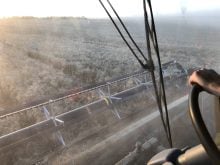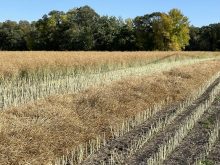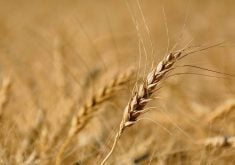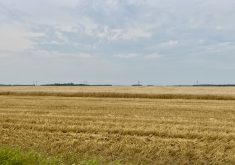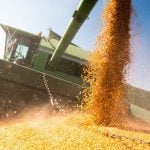The Canadian Grain Commission (CGC) proposes to rein in its growing operating surplus by cutting its two major user fees Aug. 1, — eight months earlier than normally would be the case.
If implemented, the combined fees for officially inspecting and weighing ships exporting Canadian grain will drop by 44 cents a tonne, or 24 per cent in crop year 2017-18 compared to the current crop year, which ends July 31.
The CGC also proposes to eliminate overtime charges for official inspection.
In March the CGC released a discussion paper proposing similar fee reductions and others, to begin April 1, 2018 and remain in effect for five years, with an annual 1.5 per cent increase for inflation. The discussion period ended May 1.
Read Also

Manitoba to boost rural medical responders
Manitoba bursary aims for more accessible emergency medical responder training, better rural emergency health care.
“There are no other options available to stop the accumulation of surplus other than reducing official inspection and official weighing fees,” Remi Gosselin, the CGC’s manager of corporate information services, said in an interview April 25.
“This proposal is intended to stop the accumulation of surplus, which is what the sector has been asking for, for some time, and we are responding to that need.”
The CGC has also asked the grain industry for suggestions on how it should spend the existing operating surplus, which last December was $114.5 million and rising. It’s the result of the CGC underestimating grain exports, on which the two main CGC fees apply, and higher user fees.
In 2013 the government ordered the CGC to become self-sufficient and to review, and if necessary, adjust fees every five years. To that end CGC user fees jumped, on average, 44 per cent, with the cost of one fee — ship inspections — tripling to $1.60 a tonne, sparking widespread industry criticism. Since then fees have increased annually to cover inflation.
The CGC forecast grain exports would average 23.3 million tonnes a year. But in 2013-14 exports hit 30.4 million, resulting in a $10-million surplus. Exports were higher the next two years, at 37.6 million and 38.4 million tonnes, resulting in surpluses of $24.4 million and $26.9 million, respectively. The CGC now estimates exports will average 34.4 million tonnes a year.
Assuming Canada exports 34.4 million tonnes of grain in the 2017-18 crop year, the reduced fees, if implemented, will save the grain industry $15 million. Although grain exporters pay most CGC fees, it’s widely believed the costs are passed back to farmers.
The proposed fee cut was published in the Canada Gazette April 22. Interested parties have 30 days to comment.
Currently the CGC is charging $1.70 to officially inspect grain ships and 16 cents a tonne to weigh them for a total of $1.86 a tonne.
It proposes cutting the inspection fee by 35 cents to $1.35 a tonne and lowering the weighing fee from nine cents to seven cents a tonne, making the new total of the two fees $1.42.
The CGC, whose mandate under the Canada Grain Act is to ensure Canadian quality, needs about $63.5 million to operate annually, Gosselin said. In 2017-18 it expects to hit that target earning $57.1 million from fees, plus $5.4 million from the federal government to operate the CGC’s Grain Research Laboratory, which is viewed as a public good.
The CGC also needs at least $36 million in reserve to supplement revenues in years when revenues decline due to reduced grain exports, Gosselin said.
“If implemented, the proposed fee reductions would result in significant savings for the Canadian grain industry as we enter the 2017 to 2018 crop year,” CGC chief commissioner Patti Miller said in a news release.
Agriculture Minister Lawrence MacAulay supports the proposed fee reduction.
“One of the results of the tremendous production we’ve seen in Western Canada over the past few years has been higher revenues at the Canadian Grain Commission,” he said in a news release. “As a result, I committed to our stakeholders to look at ways to lower its user fees. (The) announcement is an important step to putting more money in the pockets of our farmers, helping to grow the economy and strengthen the middle class.”
The CGC’s proposed fee cut was also endorsed by the Grain Growers of Canada.
“The accelerated reduction is ahead of the original schedule of new user fees which would have started April 1, 2018. This move is in line with our recent calls to Minister Lawrence MacAulay and the commission to prevent the further accumulation of the surplus, which is now over $100 million.
“We applaud this regulation and look forward to working with government on the consultations around the new fee schedule and use of the current surplus,” GGC president Jeff Nielsen said in a statement.
The CGC is consulting with the federal government on how to use the surplus money it has collected, Gosselin said. The CGC believes it can only use the money in areas related to its mandate.
The Western Canadian Wheat Growers Association wants the money either paid back to farmers or used to reduce future CGC fees.
The CGC itself has suggested the surplus could be used to reduce future fees, but returning it to farmers is logistically impractical, Gosselin said.
The CGC has also suggested using the money to fund a new security program to compensate farmers when grain companies fail to pay them, upgrading its laboratories, or delivering real-time analytical testing at licensed terminal elevators or other locations.




